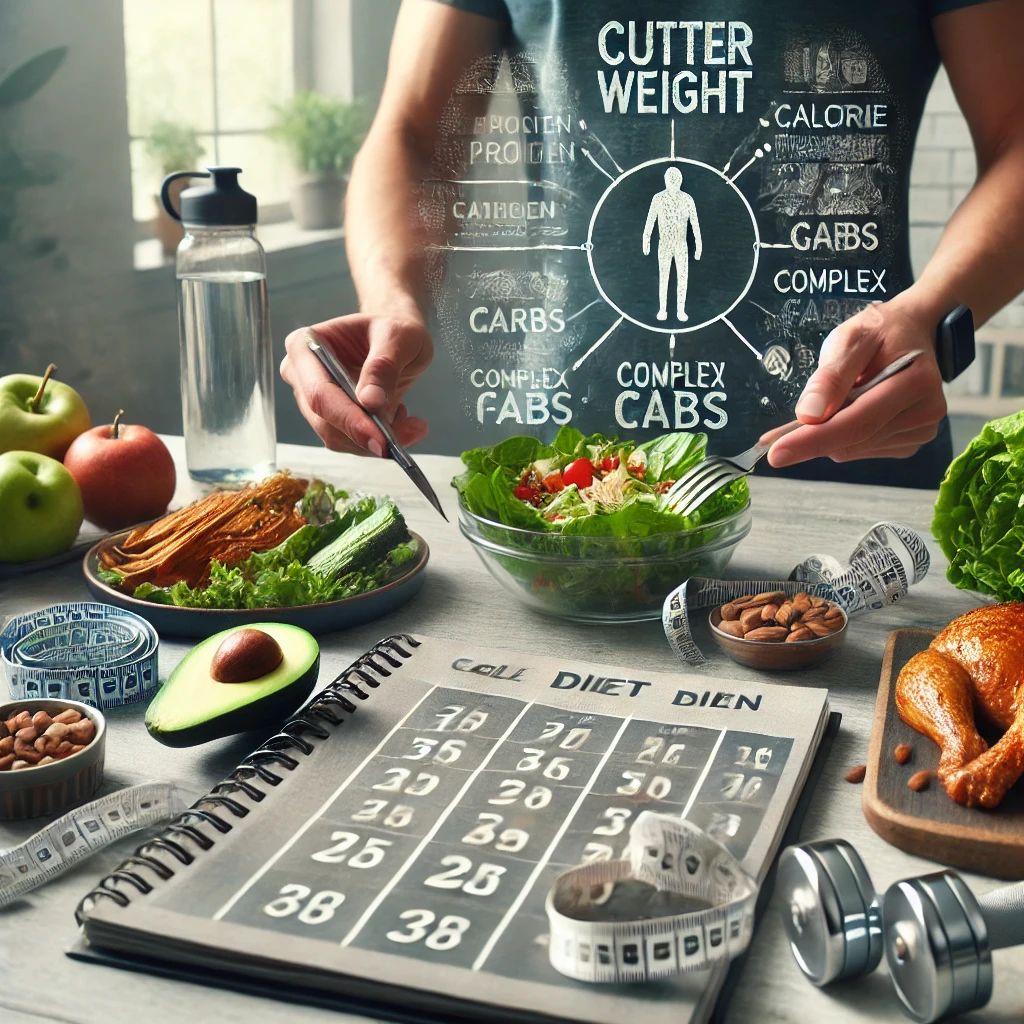
What is a Cutting Diet?
A cutting diet is designed to help you shed body fat while maintaining muscle mass. It's typically used by athletes, bodybuilders, or anyone looking to get leaner and improve muscle definition. The goal is to achieve a calorie deficit, where you consume fewer calories than your body burns, leading to fat loss without sacrificing muscle. Following a well-structured cutting diet requires careful attention to macronutrients, portion sizes, and food choices to achieve the best results.
Key Components of a Cutting Diet
1. Caloric Deficit
The foundation of any cutting diet is creating a calorie deficit:
Calculate your maintenance calories: This is the number of calories your body needs to maintain its current weight. You can use an online calculator to estimate this based on your age, gender, weight, and activity level.Reduce calories moderately: To lose fat while preserving muscle, aim for a daily calorie reduction of 500-750 calories. This typically results in a weight loss of 1-2 pounds per week, which is considered a healthy and sustainable rate.Avoid extreme calorie cuts: Drastically reducing calories can lead to muscle loss, decreased metabolism, and nutrient deficiencies. Stick to a moderate deficit for long-term success.2. High Protein Intake
Protein is essential for muscle maintenance during a cutting phase:
Consume 1-1.2 grams of protein per pound of body weight: This supports muscle repair and growth while helping you feel fuller for longer.Choose lean protein sources: Opt for high-quality protein sources such as chicken breast, turkey, lean beef, tofu, beans, fish, and eggs.Protein-rich snacks: Include protein-rich snacks like Greek yogurt, protein shakes, or hard-boiled eggs to help meet your daily protein requirements.3. Carbohydrate Management
Carbs are your body's primary energy source, but they need to be managed carefully on a cutting diet:
Focus on complex carbs: Choose complex carbohydrates like whole grains (brown rice, quinoa, oats), vegetables, and legumes. These provide sustained energy and are rich in fiber, which helps with satiety and digestion.Time your carbs strategically: Consuming carbs around your workout (before and after) can help fuel your performance and recovery. Reducing carb intake during non-active periods can promote fat burning.Limit refined carbs and sugars: Minimize the intake of processed foods, sugary snacks, and beverages that can cause insulin spikes and promote fat storage.4. Healthy Fats
Incorporating healthy fats into your cutting diet supports hormone production and overall health:
Include healthy fats: Focus on unsaturated fats from sources like avocados, nuts, seeds, olive oil, and fatty fish (salmon, mackerel). These fats are heart-healthy and provide essential fatty acids.Moderate fat intake: While fats are important, they are calorie-dense, so be mindful of portion sizes to avoid overconsumption.5. Hydration and Water Retention
Proper hydration is key for both fat loss and muscle preservation:
Drink plenty of water: Staying hydrated helps with digestion, metabolism, and muscle function. Aim for at least 8 glasses (64 ounces) of water per day.Limit sodium: Excessive sodium intake can lead to water retention, which may mask fat loss progress. Focus on whole foods and limit processed foods, which are often high in salt.Avoid sugary drinks: Stick to water, herbal teas, or black coffee instead of sugary drinks, which can add empty calories to your diet.Sample Cutting Diet Plan
Here’s a sample daily meal plan for a cutting diet to help you visualize how to structure your meals:
Breakfast: Scrambled egg whites with spinach, whole wheat toast, and a side of berries.Mid-Morning Snack: Greek yogurt with a handful of almonds.Lunch: Grilled chicken breast, quinoa, and steamed broccoli.Afternoon Snack: A protein shake with a banana.Dinner: Baked salmon, roasted sweet potatoes, and a side salad with olive oil dressing.Evening Snack: Cottage cheese with cucumber slices or a handful of walnuts.Additional Tips for a Successful Cutting Diet
Meal prep: Preparing meals in advance helps you stay on track and avoid the temptation of unhealthy foods when you're hungry.Track your macros: Use a food diary or app to track your macronutrients (protein, fats, and carbs) and ensure you're hitting your goals each day.Avoid cheat days: While it's okay to indulge occasionally, having entire cheat days can hinder your progress. Instead, allow yourself a small treat here and there to satisfy cravings without derailing your diet.Incorporate strength training: Resistance exercises are key to maintaining muscle during a cutting phase. Strength training combined with proper nutrition will help preserve lean muscle mass while shedding fat.Stay consistent: A cutting diet requires discipline and consistency. Stick with it, and remember that gradual progress is the healthiest way to achieve lasting results.Conclusion: Achieving Success on a Cutting Diet
A cutting diet can effectively help you shed fat while maintaining muscle if done correctly. By focusing on a calorie deficit, consuming adequate protein, managing carbohydrates, and incorporating healthy fats, you can achieve your weight loss goals while keeping your body strong. Remember that patience and consistency are key to seeing sustainable results, so approach your cutting phase with a balanced mindset and long-term health in mind.
The article was prepared by Ira Levovich.



